Monitoring snow levels at Gin Flat
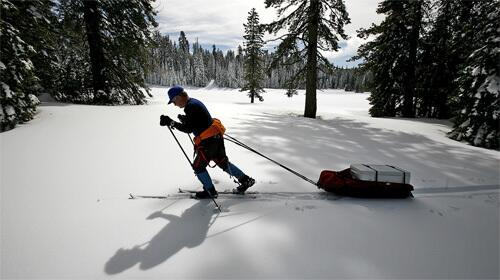
Frank Gehrke of the state Department of Water Resources pulls gear to Gin Flat in the Sierra. The site is an ideal spot to test the premise that a warming climate will bring more flooding and less snowpack to fill reservoirs in mid-summer. (Brian Vander Brug / Los Angeles Times)
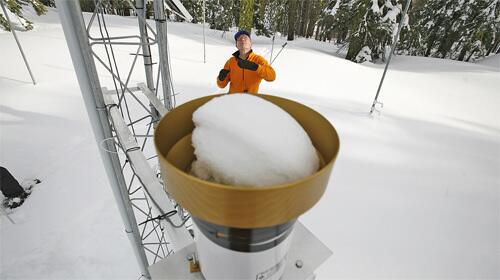
Frank Gehrke checks a sensor at Gin Flat in Yosemite National Park. He is concerned about how erratic snowpack levels have become during his 27 years of measuring: thick in 2005-06, extra-thin last year and slightly above normal so far this winter. (Brian Vander Brug / Los Angeles Times)
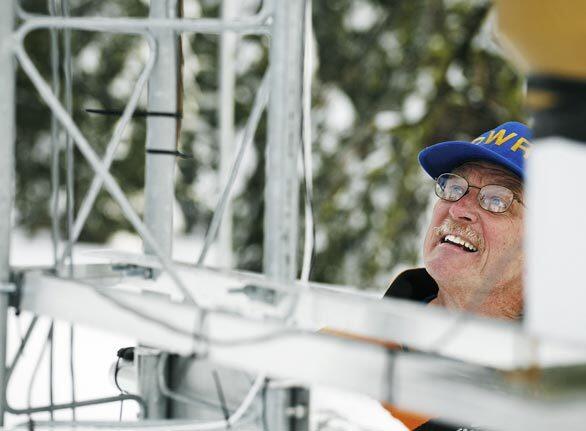
Frank Gehrke checks a sensor. Gehrke and other scientists have equipped 11 sites in Yosemite National Park with high-tech monitors, turning one of America’s most famous parks into an electronic snow laboratory. (Brian Vander Brug / Los Angeles Times)
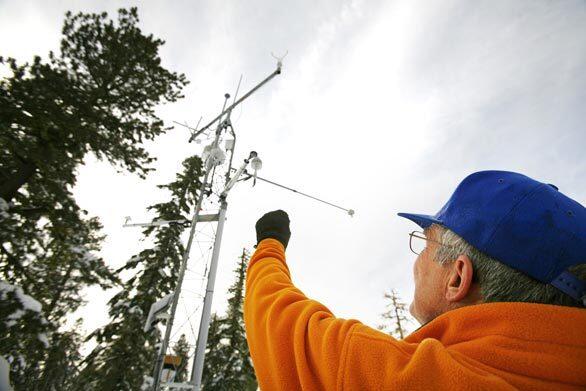
“A lot of the reservoirs are pretty low from last year,” Frank Gehrke says. (Brian Vander Brug / Los Angeles Times)
Advertisement
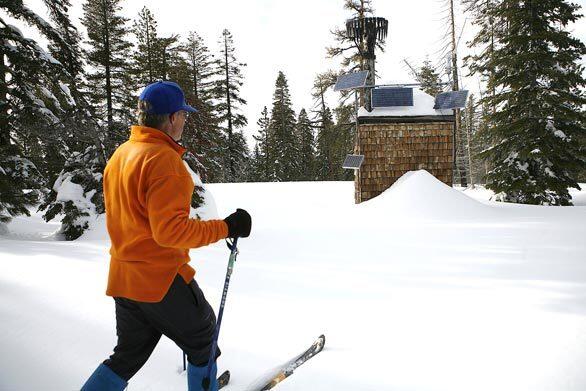
Frank Gehrke approaches the snow monitoring system, which is like a Rosetta Stone for California’s water supply. It’s where the convergence of snow, sun and temperature enables scientists to predict floods or drought. (Brian Vander Brug / Los Angeles Times)
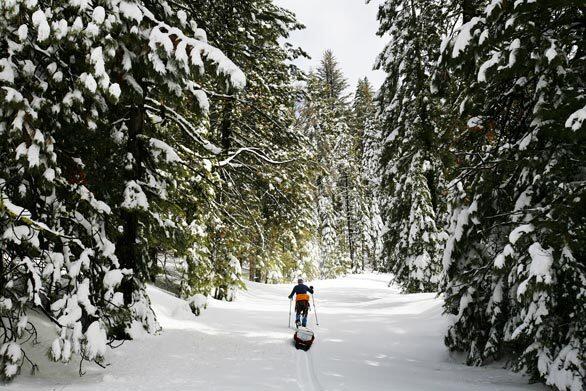
Frank Gehrke tows 60 pounds of equipment along the snow-covered Tioga Road. As caretaker of Gin Flat, he needed more power to fuel all the equipment at the site he helped develop. (Brian Vander Brug / Los Angeles Times)






